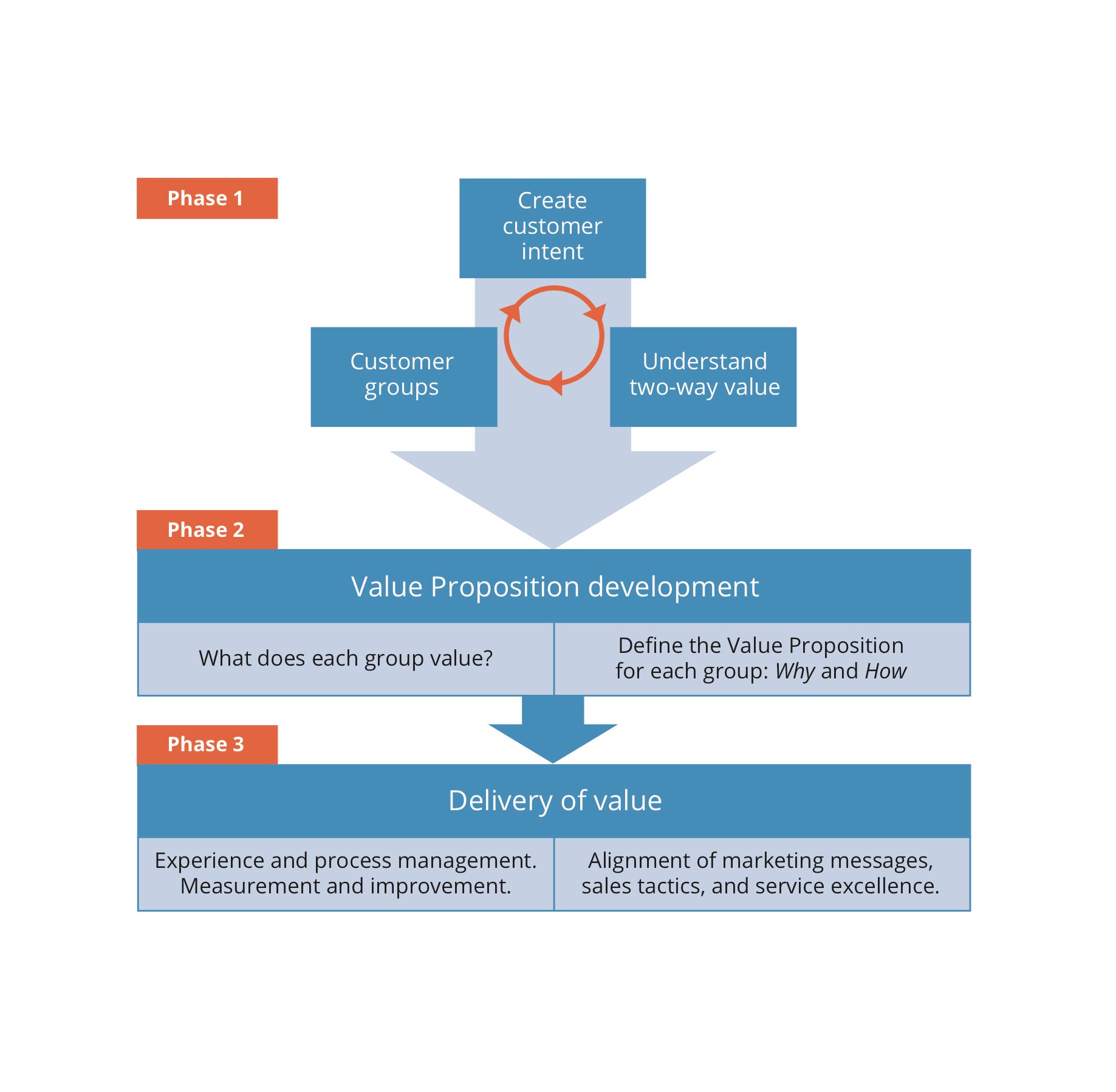
photo credit: Blake Wisz on Unsplash
We know today that we need to have customers at the heart of all we do.
Customers are central to our purpose. Revenue comes from the decisions made by customers. Growth comes from the amount of advocacy provided by our customers.
And yet most organisations still utilise business models that are based on product-centric or delivery-centric approaches. We tend to focus on what we do, rather than the value we can create for our chosen customers.
We need a customer centric business model.
Using models developed for business in the previous century will not cut it today.
The Age of the Customer
Customers have significantly changed their behaviour (in five key ways). As Forrester puts it, we are in ‘the age of the customer’.
Today the customer is in control. They make the decisions to buy – they will not be sold to. They make the decisions that provide positive word of mouth, or not.
From a business or organisation perspective, we see the outcome of these customer decisions reflected in the value of the customer portfolio.
The Customer Portfolio
An organisation’s collective sum of customers, their monetary value to the organisation and their collective voice for advocacy.
Looking at the customer portfolio we can assess this value typically by using measures such as customer lifetime value (CLV; of specific customer groups) and the collective measures that form the net promoter score. And not just NPS itself, but the understanding of the portions of the customer portfolio that are advocates or detractors.
Why is it that most customer portfolios are full of detractors and customers that are not very profitable?
Mainly because businesses with a product or delivery approach, sell to the wrong customers. They will sell to anyone that will buy. They are focused on cashflow, not profit. And not delivering value for the customers that meet the two-way value exchange.
Therefore, a business should be designing its activities and aligning its resources with an intent that improves the value of the customer portfolio and therefore the business (profitability and advocacy).
Even not-for-profits and government owned corporations seek to create a surplus, or at least deliver more value for less cost. The common denominator here is still the customer. And also, how we create value (or not) for these customers.
We then accept today that designing the business from a customer centric perspective is a good idea. It delivers benefits for the business and for the customer. Therefore, we need a business model that guides how we go about creating a customer centric business. This business model has three phases.
The Customer Centric Business Model

Here is an overview of the Customer Centric Business Model
Phase One
We can see that Phase One is about developing a Customer Strategy for your organisation, your specific context.
Customer Groups
This will start with firstly knowing your Customer Groups. The identification of these customer groups goes beyond general categorisations or personas, it has to examine how various customers behave. The values behind their decision-making is made visible in their behaviours.
Once we have the first iteration of these customer groups, then we create an understanding the Two-Way Value exchange.
Two-way value exchange
Exactly who are the customers that get the value your deliver?
Who are the customers that your purpose and values resonate with?
Which customers are the most valuable for you?
From a pecuniary perspective (potentially using CLV) and from an advocacy perspective?
Creating an understanding of your customer groups and the two-way value exchange is often iterative, it develops and improves over time. Do not get bogged down here. Recognise that you will learn more about your customer groups over time.
It is iterative
So, take your first cut of these customer groups and then determine what your intent is with each group. Do you wish to grow this portion of the customer portfolio? Do you need to re-engineer how you interact with these customers? Is there any where you need to end the relationship? Put some effort into selecting a clear intent with each customer group and determine the results or outcomes you would expect to see when that intent is realised.
This is trial and error, but until we develop a hypothesis and test it, we won’t learn. In this step of creating the Customer Strategy we will determine the intent we want to have with each group.
Phase Two
Phase Two is clearly about value propositions. Most businesses are skilled in telling us why we should buy their products (another hangover from the Industrial Age), but very few are skilled at articulating why we should buy from their organisation.
Customers are humans, and we make decisions emotionally, then use rational information to justify the decision.
As Simon Sinek says, “people don’t buy what you do, they buy why you do it”. Therefore, the Value Proposition has to be about why a particular customer group should engage with you. What common ground, values and beliefs do you have…?
Value propositions need to be at two levels.
Level one, why the customer should even listen to you. What do you stand for, what is your purpose, what difference do you make in the world?
Level two, value propositions then get into more detail about how you create value for them. The features and functions of what you do that leads to the value customers seek.
Phase Three
Phase Three is the part that organisations are addicted to – action..! This is all the doing, the management and the action.
The key problem we have here is that most businesses operate with Phase One and Two completely under a cloud. Only Phase Three is visible to them. Above that leaders are guided by a financial plan and some ill-conceived KPIs to achieve.
When this is the case, any tactic will seem okay.
In the fray of day to day activity, they negotiate and barter their efforts and resources in an attempt to reach their KPIs. These behaviours and trade-offs are perceived as being connected to a strategy, but most often they are linked more directly to the financial plan, individual KPIs and some vague ideals about putting customers first.
Phase three is where day-to-day management resides
Phase three is where we manage all the activity to deliver the customer value we have promised. To deliver on the Customer Strategy, to make progress towards those results we described in Phase One.
Customer experience improvements need to be aligned with bringing the Customer Strategy to life. It is about focusing on the value that is created.
The challenge in Phase Three is to finetune the alignment of all your resources to maximise your results.
All your activity in Phase Three is informed by, and aligned with, your Customer Strategy.
The benefits from this alignment with the Customer Strategy
There are significant benefits from focusing on improving the value of the customer portfolio.
This is, also supported by research from Harvard Business School (Ranjay Gulati in Reorganise for Resilience, 2009), Forrester (summarised in Outside In, 2012) and many others.
In summary, the research demonstrates the following four primary benefits.
1. Greater levels of profitability – mainly from focusing on the right customers, and a value exchange that improves retention.
2. Deeper levels of business resilience – especially in of volatile economic conditions.
3. Greater levels of engagement with customers which leads to improved retention and promoter behaviour.
4. Higher levels of engagement with employees by providing alignment of purpose, bringing agility and improved organisational capability.
To leverage these benefits, the organisation needs to be designed for maximising profit and advocacy, by improving the value of the customer portfolio.
This starts with a Customer Strategy.
Learn more about creating a Customer Strategy.
The Customer Centric Business Model plays a key role in the Profit by Design principles and for managers and leaders in the New Path to Profitability and Engagement.
You can learn more about the book: Profit by Design, how to build a customer portfolio full of profitable promoters here (with free downloads).



